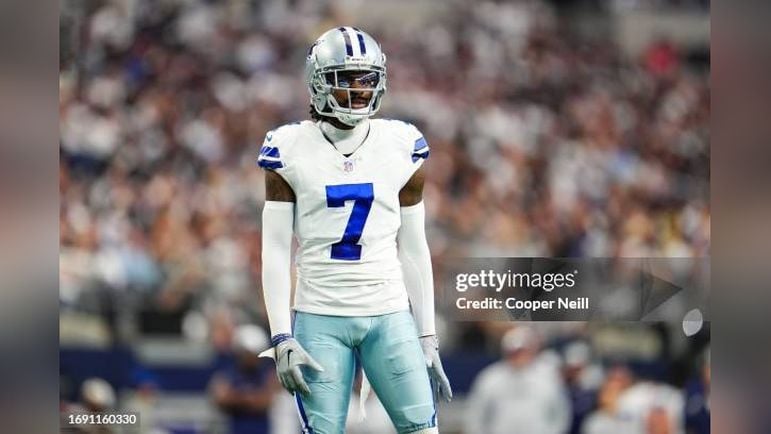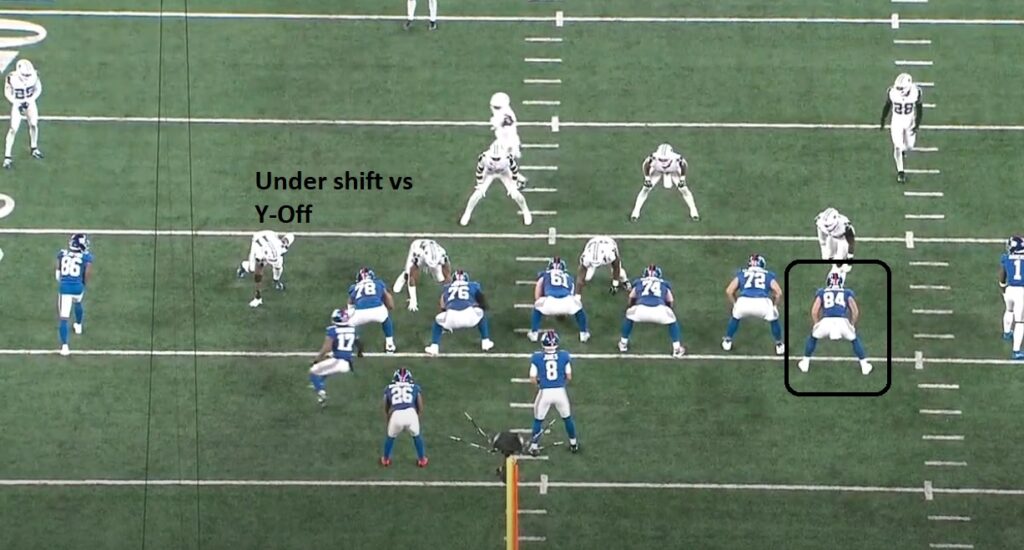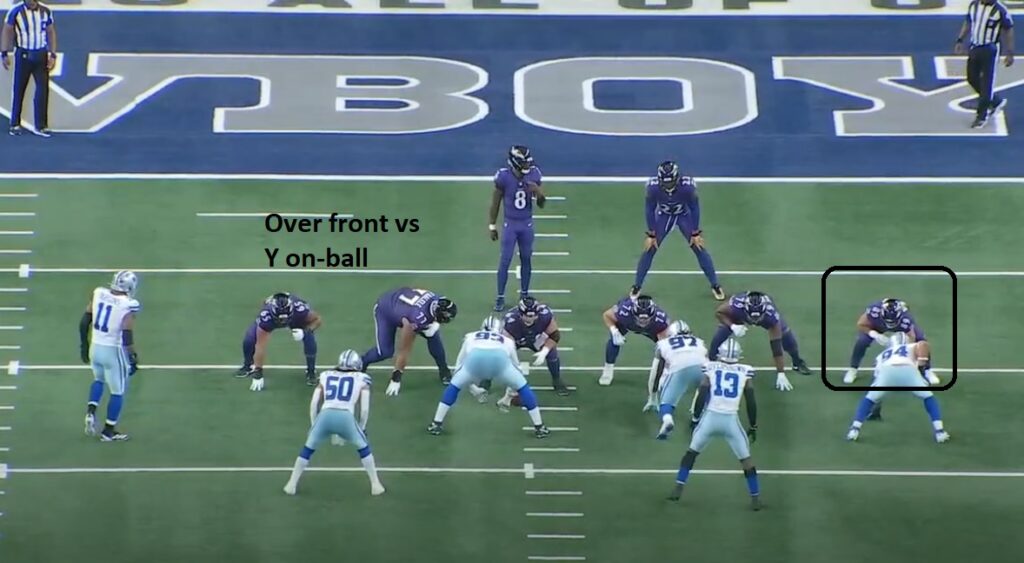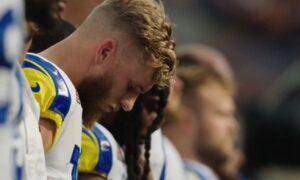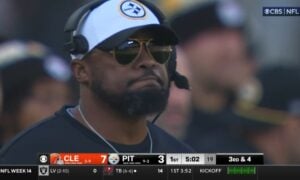As we’ve been doing for several years now, we’ll break down the Pittsburgh Steelers’ opponent each week, telling you what to expect from a scheme and individual standpoint. This year, Jonathan Heitritter and I will cover the opposing team’s defense. I will focus on the scheme, Jonathan on the players.
Today, scouting the Dallas Cowboys’ defense.
ALEX’S SCHEME REPORT
Cowboys’ Run Defense
The Cowboys’ run defense has been shaky at best so far this season, struggling their first three weeks of 2024 before tightening up against the New York Giants. On the year, they’ve allowed at least 90 yards on the ground in their first three games before New York rushed 24 times for 26 yards in Week 4’s loss. From a per-game standpoint, they’re giving up nearly 146 yards per game, 27th overall.
They’re allowing 4.6 yards per carry, 21st in football and given up eight rushing touchdowns. That’s tied for most allowed in the NFL with the Arizona Cardinals. Dallas has given up 17 runs of 10-plus yards through four weeks, tied-27th in the league.
Dallas runs a 4-3 defense that will be missing critical pieces in LB/EDGE Micah Parsons and DE Demarcus Lawrence. Major losses. Their leading tackler is LB Eric Kendricks, who is pacing the group with 42 stops. He’s playing about 90-percent of the snaps. LB DeMarvion Overshown has 29, the only other player with at least 20 tackles.
I spent a lot of time watching their front. They are big in the middle with DTs Linval Joseph and Mazi Smith, space eaters instead of gap shooters. There are some tendency breakers but they align to the strength with their over front unless the tight end is off, in which they’ll align in an under front in anticipation of the Y-off pulling across. Examples.
Motion is also something I note to see how teams respond to it. Even on tight end trades, shifting to the other side, the d-line won’t move. The linebackers will respond instead. Here’s an example.
Perhaps the Steelers can run motion and call gap schemes to gain an extra gap and use the d-line being out of position against them.
Another strategy is a heavy dose of zone reads. Baltimore was effective on these schemes in their Week 3 win. Dallas tried different things to defend it, slant/scrape and surf the read player (attempting to not bite on the back or the QB and make for a muddy read) but they had issues with it. Even if you credit that to the Lamar Jackson, even Daniel Jones had (more limited) success in Week 4.
Wide receiver runs, not that Pittsburgh uses them to begin with, should be out of the game plan. Dallas isn’t fooled and defends them well.
Some other defensive notes. They’re allowing 26 points per game, an ugly 27th overall. They imploded and gave up 44 to New Orleans but have also allowed no more than 17 points in two of their other three games so that outing against the Saints is a bit skewed. Situationally, they’re terrible in the red zone, the opposition finding the end zone 75-percent of the time (28th in the NFL) while the third down defense is much better (33.3-percent, 13th). The team tackles at an average rate.
Cowboys’ Pass Defense
Their pass defense is better than their run defense. They’re allowing a fairly high 7.5 YPA (23rd in the league) but only four passing scores, tied for 11th. Partially because teams are running on them down low. Seven of the nine red zone touchdowns they’ve allowed this year have come on the ground. When they’ve been burned by the pass, it’s the big-play, allowing 57 and 70 yard scores.
Without Parsons and Lawrence, they’re losing literally half their pass rush. Of their eight team sacks, they’re responsible for four of them. Of their 22 QB hits, they’re responsible for 11 of them. And Lawrence has one of their two forced fumbles. Without them, off-ball LB Eric Kendricks is their leading sacker with two of them.
Dallas’ defense has four interceptions coming from four different players. CB Trevon Diggs is their No. 1 corner and Daron Bland doesn’t seem poised to play in this one. Diggs leads the way with three pass breakups while their d-line has combined to have a pair. With a couple of Fields’ passes batted down last week, the Cowboys could be looking for more.
From a coverage standpoint, the numbers show they play a lot of Cover 3 and a high rate of Cover 4 (quarters). But overall, they do an effective job of mixing up coverages, though they don’t do a lot of post-snap rotation. It’s relatively static in that regard.
The boot game can be effective, especially with Parsons and Lawrence out and not screaming off the edge. Dallas is aggressive on the ball and can be baited into mistakes. From corners and secondaries who want to jump routes to linemen who take the cheese on ball-fakes, the flat can be open. Two examples of the latter. Would like to see this on first down.
On Yankee concepts, they will make a “Zombie” call and cut the crosser with the safety, leaving the post open. They are also vulnerable to RB screens, giving up big chunks throughout the year, including a 57-yard score to Saints RB Alvin Kamara earlier in the year. Pittsburgh has struggled here but Dallas is weak. Maybe Pittsburgh can hit one after getting a big play to Najee Harris last week.
From a blitz standpoint, they like to rush around midfield but have shown different tendencies with safeties and corners off the edge. Hard to get a consistent read on when they’ll send them. They definitely love dialing up sim pressure looks and Mug every gap on third and obvious pass moments. Sometimes they’ll drop the ILBs out, sometimes they’ll rush and drop the EDGEs. The latter, the defense jumped, but we see the design and intent.
In short-yardage moments, they will use a 5-2 front to stuff the run.
Last note. On the road last week against the Giants, the Cowboys were a little jumpy. Called for offsides/neutral zone infraction twice and once also had 12 men on the field. Hard counts at home would be nice, though Justin Fields isn’t terribly vocal. But mixing up the snap count could net a free 5 yards and maybe a free play and deep shot downfield.
Jonathan’s Individual Scheme Report
The Pittsburgh Steelers will look to rebound from their first loss of the season last week in Indianapolis this week as they host the Dallas Cowboys at home on Sunday Night Football. Dallas just beat their division-rival New York Giants last Thursday, but their defense lost some key contributors in that game, having EDGEs Micah Parsons and DeMarcus Lawrence go down with injuries and won’t be able to play Sunday night. This doesn’t bode well for Dallas, who currently rank 20th against the pass and 27th against the run.
Defensive Line
Leading the charge upfront for Dallas’ defensive line is No. 58 Mazi Smith. The former first round pick from a year ago is a stout run plugger in the middle, having great size and strength to control gaps and make life difficult to run up the gut for opposing offenses. The 6-3, 337-pound defender also displays flashes of quickness for his size, making him a name for the interior offensive line to account for on Sunday night.
Starting next to Smith on the defensive line is No. 97 Osa Odighizuwa. The former UCLA Bruin plays with a fine motor in pursuit of the ball, running down runners toward the sidelines as well as shooting gaps to wreak havoc in the backfield. Odighizuwa brings more of a pass rush presence upfront than Smith but has yet to log a sack this season. Providing depth for Dallas on the defensive line is No. 93 Linval Joseph who has been a long-time starter in the league as more of a run stopper and No. 92 Carlos Watkins who has yet to record any stats this season.
EDGE
With Parsons and Lawrence expected to be out for Dallas, the Cowboys will likely rely on No. 94 Marshawn Kneeland and No. 99 Chauncey Golston to be their penciled in starters on the edge. Kneeland is a second-round pick from the 2024 NFL Draft and has played 40% of the defensive snaps on the season, having the size and length (6-3, 268 pounds) Dallas likes on the edge as well as the athletic traits to rush the passer. Golston is more of a run stopper at defensive end, having only 4.5 sacks through four seasons in the league.
No. 91 Tyrus Wheat also profiles more as a rotational run defender, having yet to record a sack after signing as an UDFA last season. Dallas also signed KJ Henry off the Cincinnati Bengals’ practice squad this week in-wake of the injuries they’ve sustained at defensive end.
Linebackers
Starting at linebacker for Dallas is No. 50 Eric Kendricks who primarily plays the MIKE. Kendricks has been in the league for a decade, previously playing with the Vikings and Chargers and now has followed his former coach Mike Zimmer to Dallas. Kendricks is a strong run defender that has the speed to play to the sidelines as well as the stopping power to come downhill. He isn’t as fluid as he used to be in coverage, but he can still make his zone drops, having an interception in coverage while also two sacks as a blitzer this season.
Starting next to Kendricks is No. 13 DeMarvion Overshown who is an energizer bunny on the field for Dallas. The long, athletic Overshown flies around the field, attacking the ball carrier with the demeanor you want in a linebacker. He flows well to the sidelines in pursuit of the football and has the movement skills to run with running backs and tight ends in coverage. Still, Overshown has allowed 16-of-17 pass attempts his way to be completed this season, meaning he can be attacked by the likes of Pat Freiermuth and Pittsburgh’s running backs.
Also starting for Dallas at linebacker is rookie No. 35 Marish Liufau who was drafted in the third round this spring out of Notre Dame. Liufau has great size for the position and is a good athlete, having the speed to come downhill as well as pursue outside. Also seeing time for Dallas at linebacker are No. 18 Damone Clark who was a full-time starter last season and former Steeler No. 57 Buddy Johnson who plays special teams.
Cornerbacks
The star in the Dallas Cowboys secondary is No. 7 Trevon Diggs who got the bag last offseason as one of the highest-paid cornerbacks in the league. The 6-2, 195-pounder missed most of last season due to injury, but Diggs has picked up right where he left off, already having an interception as one of the deadliest ball hawks in football. He can be a bit feast or famine as he likes to risk giving up big plays to make big plays, but Diggs has 19 interceptions and 55 pass deflections in 51 career games, meaning he’s a guy Pittsburgh needs to have circled in this matchup.
Starting in the slot for Dallas is No. 2 Jordan Lewis who has been with the Cowboys since getting drafted there in 2017, seeing time both in the slot and out on the boundary, but primarily plays as Dallas’ nickel defender in 2024. He’s been effective in coverage to start the season as also is a capable tackler in run support.
No. 41 Caelen Carson missed last week’s game with a shoulder injury and his status for Sunday’s contest is up in the air as Carson started opposite of Diggs the first three games. There is a chance too that No. 26 DaRon Bland could return this week too from injured reserve which would be a big boost for Dallas’ defense as Bland led the league with nine interceptions last season, returning a whopping five of those for touchdowns.
Stepping up for Dallas in absence of their starters have been No. 25 Andrew Booth Jr. and No. 27 Amani Oruwariye. Oruwariye recorded an interception and two pass breakups last week at the end for the game for Dallas and has started 36 games in his NFL career, recording six interceptions back in 2021 with Detroit.
Booth came over from Minnesota this offseason in a trade, off-loading the former second-round pick that hasn’t performed up to expectation to start his NFL career. The Cowboys also have No. 24 Israel Mukuamu and No. 29 C.J. Goodwin as Goodwin has become a core special teams’ ace for Dallas.
Safeties
Starring at safety for Dallas are No. 6 Donovan Wilson and No. 28 Malik Hooker. Wilson worked his way into the starting lineup as a former sixth-round pick and hasn’t looked back. Bringing the skill set as a heat-seeking missile to the fold as he seeks out contact as a hitter. Wilson flies around the field looking to enforce his will on ball carriers as well as aggressively comes downhill against the run.
Hooker is your prototypical free safety, having the speed, length, and range to cover the backend of the secondary like a centerfielder. He closes on the ball well when it’s in the air, having the ability to impact the pass on deep shots. Hooker is also a willing tackler in run support, making a nice 1-2 punch between him and Wilson at safety.
Backing up Dallas’ starting safeties are No. 14 Markquese Bell who is currently dealing with an ankle injury and No. 30 Juanyeh Thomas who primarily operate on special teams but can come in on subpackage units.

